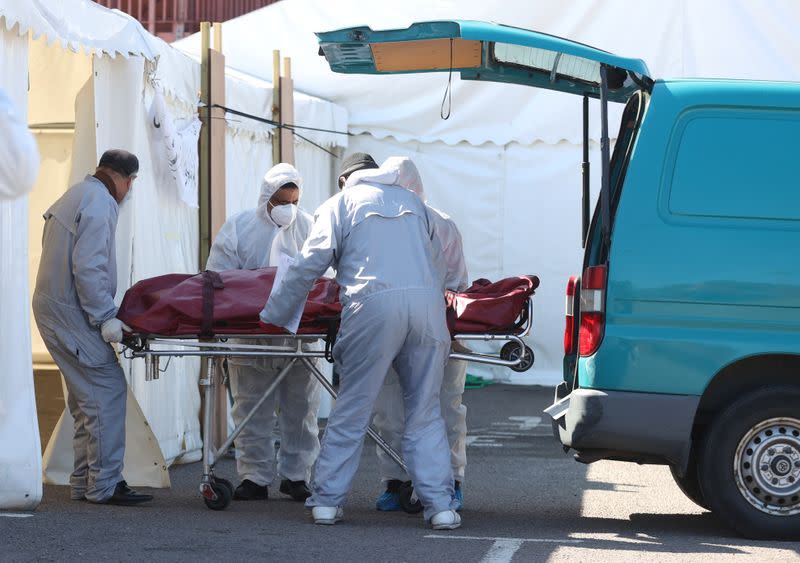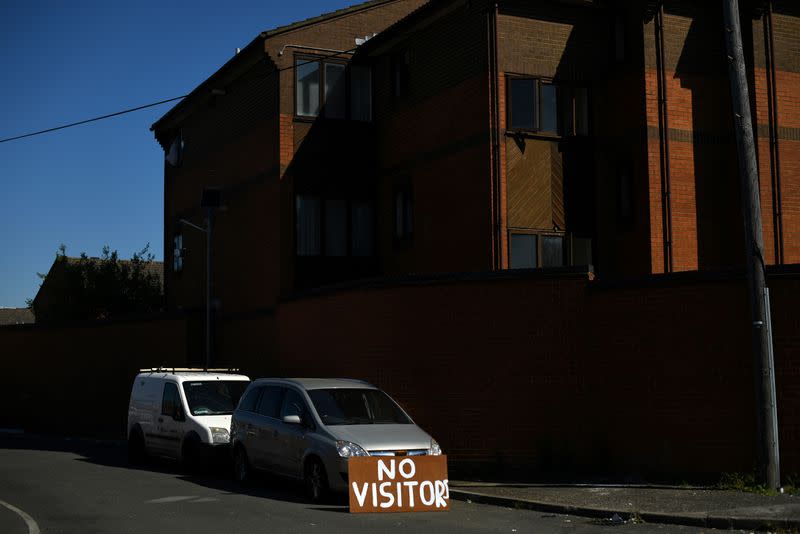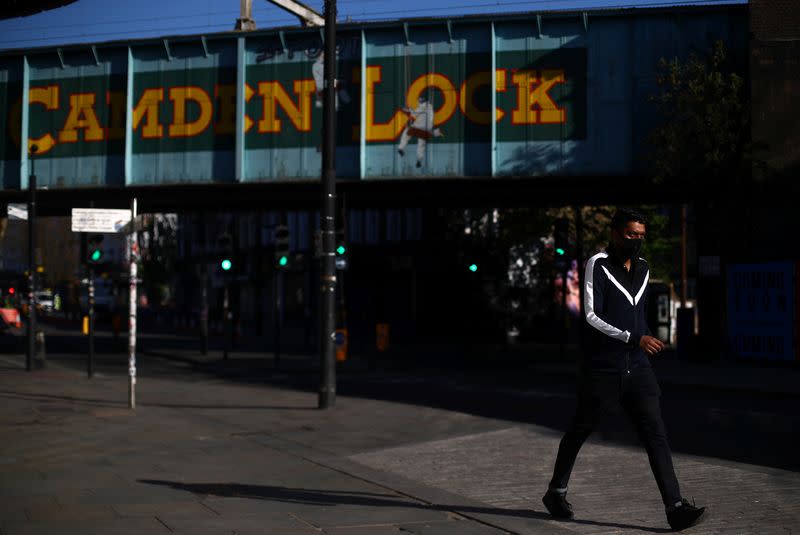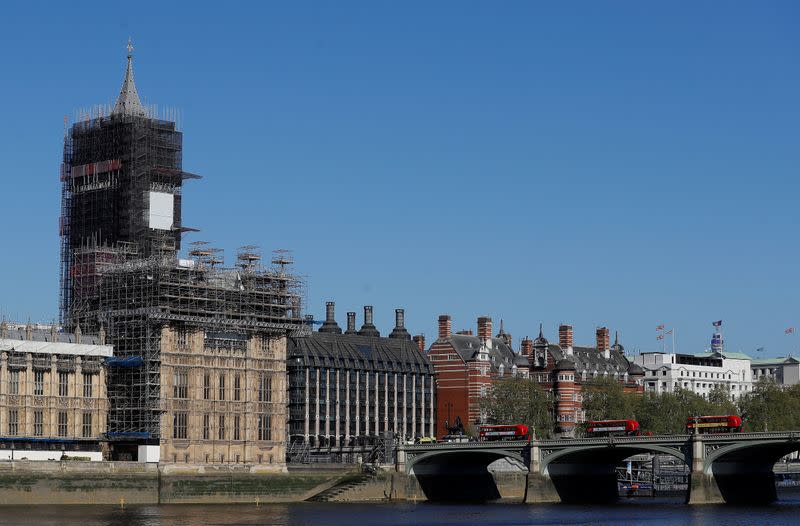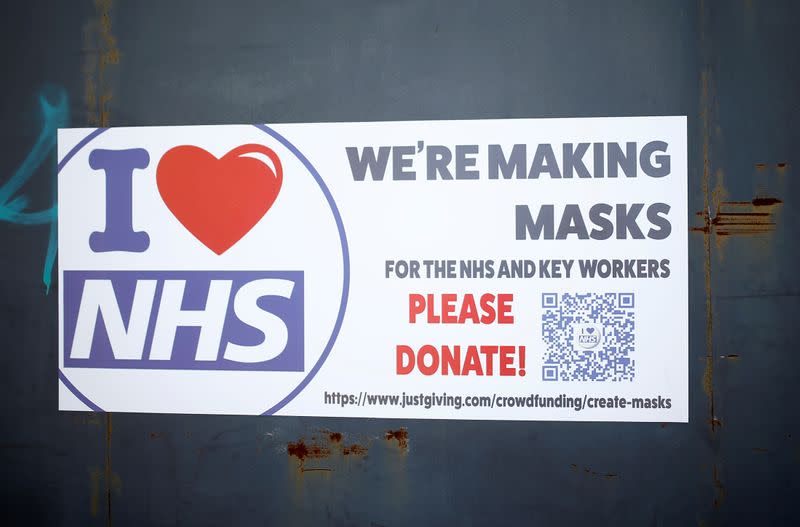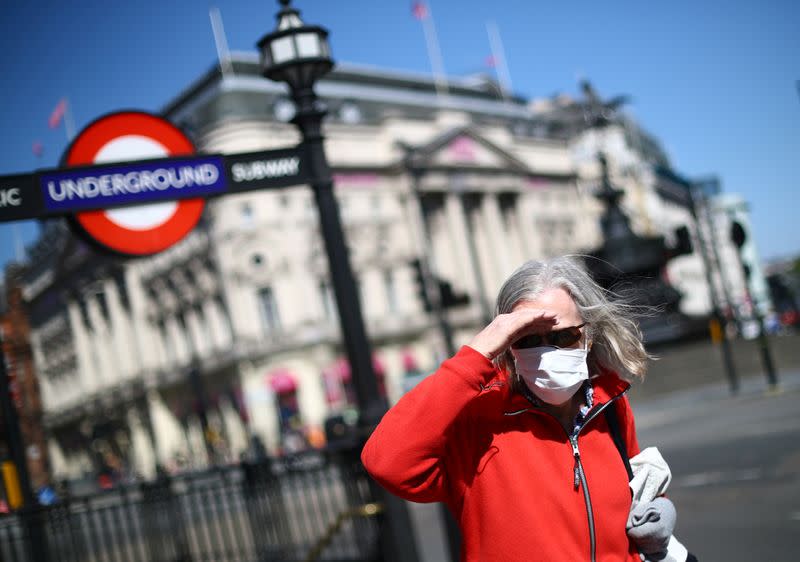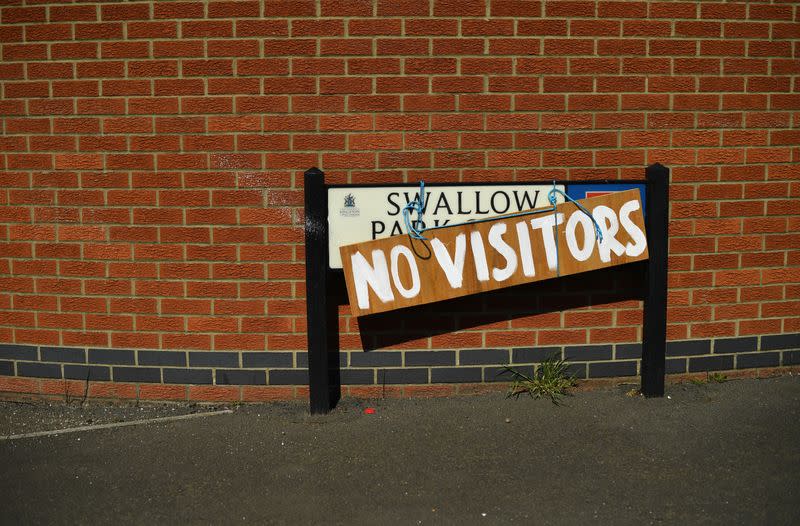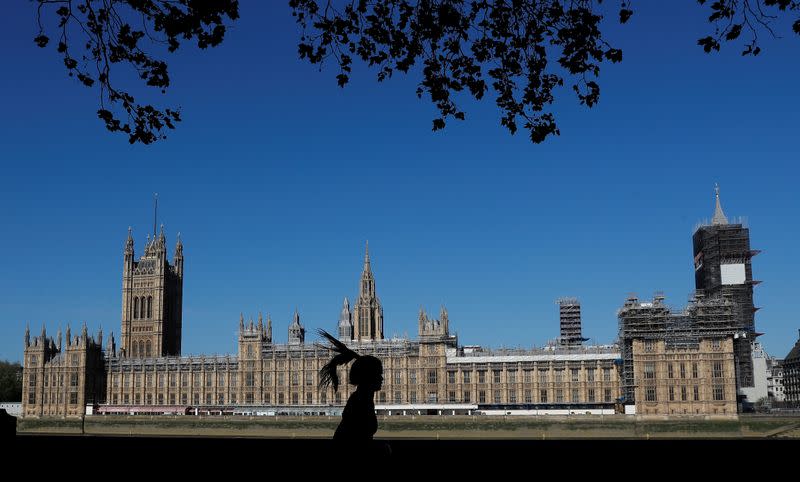UK's true COVID-19 death toll far higher than daily figure, data suggests
By Andy Bruce
LONDON (Reuters) - The true extent of Britain's COVID-19 death toll was more than 40% higher than the government's daily figures indicated as of April 10, according to data that put the country on track to become among the worst-hit in Europe.
The Office for National Statistics said it recorded 13,121 deaths by April 10 in England and Wales, which account for the vast majority of Britain's population, compared with 9,288 in the government's daily toll for those who died in hospital.
The ONS figures include deaths in care homes - which have doubled in less than a month - as well as in hospitals.
"The sharp rise in care home deaths is deeply alarming – this could be the second front in the battle against COVID-19," said Niall Dickson, chief executive of the NHS Confederation, which represents organisations across the healthcare sector.
Around 84% of COVID-19 deaths have taken place in hospitals, with the remainder in care homes, private residences and hospices, the ONS said.
Britain, which scientists say is probably now around the peak of the outbreak, has reported the world's fifth-highest national death toll from COVID-19, the respiratory disease caused by the coronavirus.
The global death toll from COVID-19 now stands at around 170,000.
The latest hospital death data show 17,337 people had died after testing positive for coronavirus across the United Kingdom as of this Monday.
If these figures underestimate the overall death toll by a similar amount, then the true human cost for the United Kingdom as a whole could be above 23,000 based on the latest data - making it the second-worst hit in Europe after Italy.
However, the difference between the initial daily figures published by the government and the later ONS data has narrowed with each week that passes, and may have reduced further by the time the ONS reports on the latest toll.
Health Secretary Matt Hancock told reporters that the 40% gap between the daily data and the more comprehensive ONS data was "not an accurate representation of those figures."
Earlier on Tuesday, official statistician Nick Stripe told the BBC that the ONS figures up to April 10 were "40% higher than the numbers that were actually announced on the next day."
Click https://fingfx.thomsonreuters.com/gfx/polling/nmovagllvab/Pasted%20image%201587459847856.png for a GRAPHIC on COVID-19 deaths in England and Wales
The data are likely to raise further questions about Britain's decision to impose its lockdown of society at a later date than European peers, many of which have had less severe outbreaks.
Prime Minister Boris Johnson is still on sick leave after falling ill with COVID-19 as his ministers attempt to tackle urgent issues such as a shortage of personal protective equipment for health workers.
DEADLIEST WEEK
Including all deaths, 18,516 people died in England and Wales during the seven days to April 10 - almost 8,000 more than normal for the time of year and marking the deadliest week since a severe flu outbreak more than 20 years ago.
Martin Hibberd, professor of emerging infectious disease at the London School of Hygiene and Tropical Medicine, said the figures marked a rapid increase.
"With limited testing being carried out, it may be that all of the 7,996 excess deaths were directly due to COVID-19," Hibberd said.
"(But) it is also likely that at least some of these were indirectly involved, such as through inability to access typical medical care for other conditions because of COVID-19 activities."
COVID-19 was mentioned in a third of all death certificates issued in England and Wales in the week to April 19.
In London, more than half of the death certificates issued that week mentioned COVID-19.
The ONS figures are based on mentions of COVID-19 on death certificates, whether or not the deceased had tested positive for coronavirus.
They suggested there are more people dying in care homes of COVID-19 than officially recorded.
"In care home settings, there are now double the number of deaths from all causes ... than there were two weeks previously," ONS' Stripe told the BBC.
"About 17% of those deaths mention COVID on the death certificate."
(Editing by Stephen Addison, Guy Faulconbridge, Gareth Jones and Nick Macfie)
